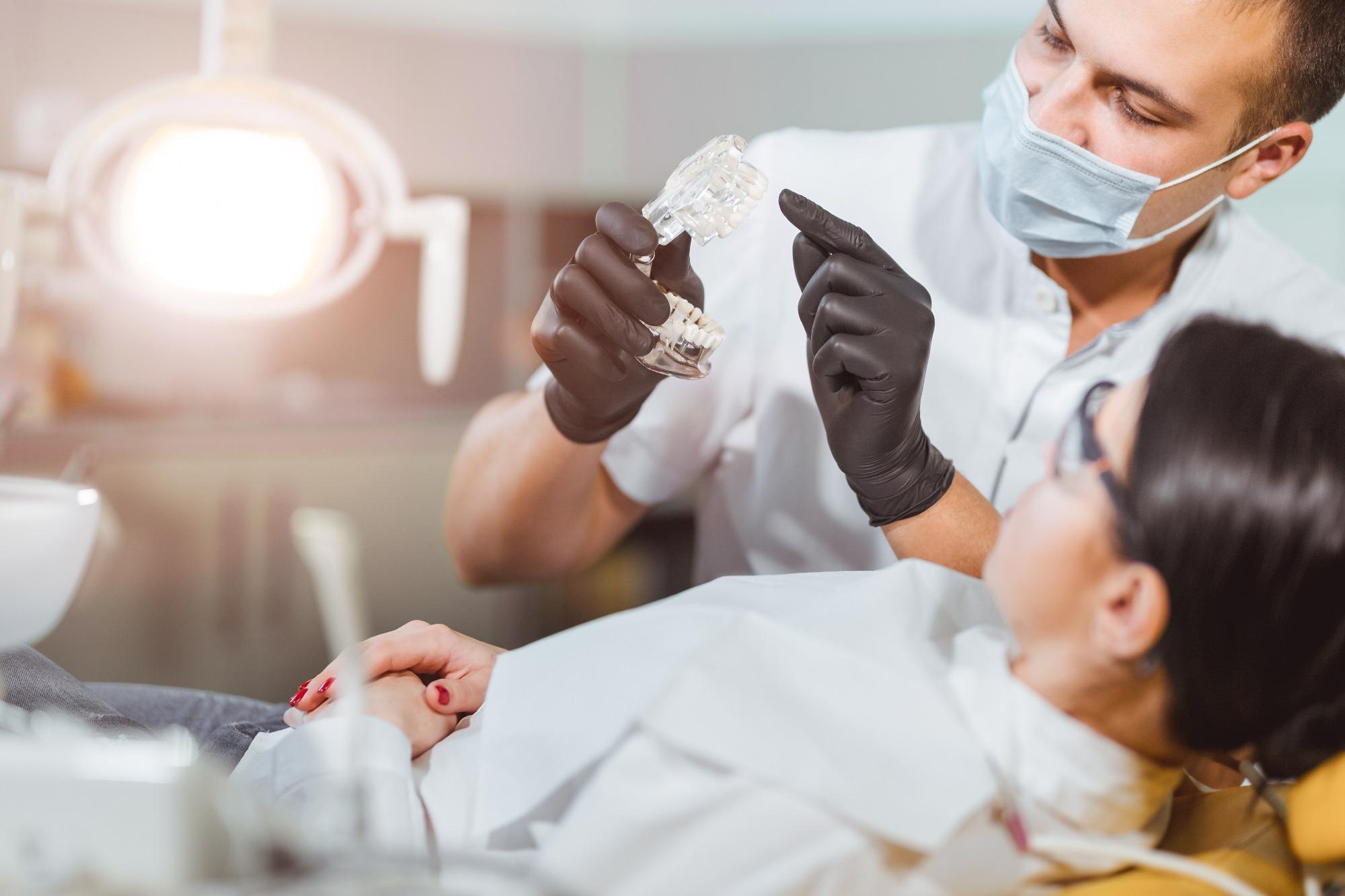Graphene could be modified and find itself in a wide range of dentistry applications.

Image Credit: Shutterstock.com / studio2sim
Some of the earliest dental fillings discovered in Slovenia date back almost 7000 years and evidence of a lanced abscess at the root of a tooth has been discovered in a skull dating back to 2500 BC. Details of dental practices have also been found in Sumerian, Egyptian, Indian, Chinese, and Japanese ancient texts.
Like the origins of many medical fields, early dentistry consists of brutal and invasive procedures that were often as bad as the ailments they sought to remedy. Thankfully, dental techniques have come a long way since prehistory, especially in the last few decades.
As techniques have taken this tremendous leap forward, so too have the materials used in dentistry. Whilst the Slovenian dental filling dating back to around 5000 BC was made of Beeswax, historically the most common materials used for fillings have been metals like tin, silver, and gold. These were eventually replaced with amalgams made of these metals and mercury, the latter of which was eventually replaced due to health concerns.
Currently, dental patients who don't want amalgam fillings have a choice of gold, porcelain, and a composite filling composed of acrylic resin and powdered glass to fill in gaps in their smiles arising from tooth defects. Such materials can also be used as faux teeth when cavities become extreme enough to lead to tooth loss.
Whilst these materials have clearly come on leaps and bounds since beeswax, there is still a lingering issue that materials scientists and dentists alike would love to solve. As advanced as these materials are, they can often feel somewhat unnatural and fail to maintain actual tissues' biological and mechanical properties.
And this issue goes beyond the aesthetic and the sensory, the success of many modern treatments can be boosted by the addition of regenerative tissue and by tissue engineering, especially when injury or disease has caused bone damage or degeneration. These techniques require a material scaffold with properties matching those of natural tissues.
A new review paper published in the journal Smart Materials in Medicine¹ suggests graphene oxide as a promising material for a wide range of dental uses, including as a scaffold for tissue regeneration. In championing the material, the authors also point out how graphene oxide dental technology can make the leap from the lab to the clinic.
Why Graphene Oxide?
Since it was first isolated in 2004, graphene has made its way into a wide range of technological applications, including electronics, battery production and medicine. This is because of graphene's unique electronic and chemical properties and its strength and lightweight nature.
It's unsurprising to see dentistry getting in on the graphene action, but meeting the needs of dental patients requires modifying this wonder material. Materials scientists have done this by adding hydroxyl, epoxy, carboxyl, and carbonyl groups creating a graphene derivative called graphene oxide.
While this modification damages the graphene's honeycomb structure, it also grants the graphene oxide nanosheets improved chemical stability and water solubility. It results in a material with many properties that make it ideal for dentistry.
Foremost amongst these are antibacterial properties that give graphene oxide an advantage over conventional dental implants that undergo antibacterial surface modifications or regular cleaning.
In terms of usage as a tissue scaffold, graphene oxide seems to be an ideal choice. A wealth of studies have demonstrated that the material helps promote cell regrowth by providing a surface that favors cell adhesion. In fact, this property has been shown to be so useful that stem cells can be induced to differentiate in a particular direction with special engineering.
There is a further advantage that graphene oxide can deliver to dentistry, too. Thanks to its large surface area, a nanosheet of graphene oxide can be loaded with molecules that can be gradually released. This means that the material has the potential for targeted and timed in-situ drug delivery.
What Does the Future Hold for Graphene Oxide and Dentistry?
The authors of this review paper have highlighted a multitude of potential dental uses, including:
- An antibacterial coating for titanium bone implants
- Antibacterial cleansing through the absorption of light irradiation and emission as heat
- The coating on modifying scaffolds encouraging cell adhesion and growth
- In implants that encourage bone growth and stem cell differentiation
- As an additive to adhesives to boost durability
Many of the above applications are already backed with extensive experimental testing, but the final leap from lab to patient is yet to be made. Early results are positive, however, the authors point out that graphene oxide coatings for implants and scaffolds have already been shown to promote bone formation.
Integration of graphene oxide into scaffolds may require a deeper exploration as there are currently no chemical structures for prepared graphene oxide. Researchers will have to assess the differences between use in laboratory and clinical settings.
Beyond this clinical testing, the authors also suggest that graphene oxide could further benefit dentistry in the future by facilitating the delivery of genes loaded into its nanosheets for enhanced tissue engineering.
"The development of GO is an exciting and promising material with the potential to revolutionize clinical practice, which remains to be further explored," the researchers conclude.
Disclaimer: The views expressed here are those of the author expressed in their private capacity and do not necessarily represent the views of AZoM.com Limited T/A AZoNetwork the owner and operator of this website. This disclaimer forms part of the Terms and conditions of use of this website.
Source:
¹ Jiang. X., Qi. Y., Jiang. F., Zhou., et al, [2021], 'Graphene Oxide as a promising material in Dentistry and tissue regeneration: a review,' Smart Materials in Medicine, [https://doi.org/10.1016/j.smaim.2021.08.001]